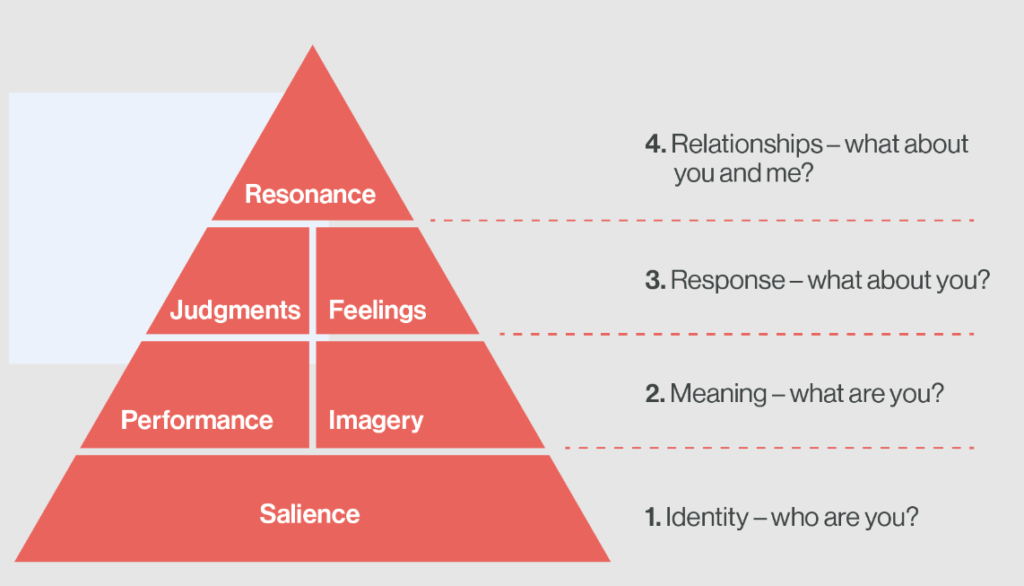In today’s dynamic and competitive business landscape, capturing and retaining the attention of your target audience has become increasingly challenging. With numerous companies vying for their attention, establishing a solid brand and cultivating brand equity has evolved from being an option to an absolute necessity.
In this blog, we will delve into the fundamental aspects of brand equity, providing you with a Simplified definition and guiding you on developing and measuring its success. Throughout this journey, we will also explore real-world case studies that exemplify the strategies and techniques discussed.
Join us as we unravel the intricacies of brand equity, empowering you with the knowledge and insights to enhance your brand’s standing and captivate your audience effectively.
Brand Equity – An Overview
In simple terms, brand equity is the premium value a company generates with its product, values, or identity. The customer’s perception of the brand determines this. Therefore, it can be positive or negative.
Brand Equity Meaning

Brand equity helps you achieve the critical aim of raising the value of your brand while also giving insights into what your customers want. It has three basic components, namely:
- Consumer perception (what consumers believe the brand represents)
- Positive and negative effects (what the brand’s reputation is viewed to be)
- Resulting value ( the ROI of the brand for the business)
When writing a brand equity definition for your company, remember that it will have a direct impact on the company’s sales volumes and profitability (more on this in the next blog). Additionally, often companies in the same domain compete on the basis of brand equity.
Related: Your Step-By-Step Guide to Creating A Branding Strategy
Importance of Brand Equity
Brand equity refers to the intangible value and reputation that a brand holds in the minds of consumers. It represents a brand’s inherent worth, trust, loyalty, and recognition, influencing consumer behavior and driving business success. Brand equity goes beyond a product or service’s tangible features and benefits, encompassing the emotional connection and perceived value associated with the brand.
At its core, brand equity is the culmination of a brand’s cumulative efforts in building awareness, shaping perceptions, and delivering consistent experiences over time. It is built through factors such as brand positioning, customer experiences, marketing communications, and overall brand strategy.
A brand with strong equity enjoys several advantages over its competitors. It can command premium pricing, attract loyal customers, and generate greater customer engagement. Additionally, brands with high equity can withstand market fluctuations, launch successful new products or services, and expand into new markets with relative ease.
Measuring brand equity involves assessing various dimensions, including brand awareness, perception, loyalty, and associations. These metrics help businesses gauge the strength and effectiveness of their brand in the marketplace and identify areas for improvement.
By understanding and cultivating brand equity, businesses can establish a distinct identity, differentiate themselves from competitors, and foster long-term relationships with their target audience. Well-managed and strong brand equity is a valuable asset contributing to sustainable growth and financial success.
Related: Your Ultimate Guide To Product Branding
How do you develop Brand Equity?
There are multiple models for developing brand equity. Keller’s Customer-Based Brand Equity Model is the most commonly used model today. Let’s take a look at how it works.
Keller’s Brand Equity Model
Keller’s Brand Equity Model is also known as the Customer-Based Brand Equity Model. Kevin Lane Keller, a marketing professor at the Tuck School of Business at Dartmouth College, developed the model and published it in his widely used textbook, “Strategic Brand Management.”
How customers think and feel about your products forms the core of this model. You have to build the right experience around your product so that customers have optimistic, positive feelings about it.
The four steps of Keller’s Pyramid represent the four fundamental questions that your customer will ask about your brand.

Step 1: Brand Identity – Defining Your Uniqueness

At the foundation of brand equity lies brand identity. It’s about establishing who you are as a brand and how you differentiate yourself. Craft a distinct impression that resonates with your audience at every touchpoint. Build a strong foundation for brand equity by consistently delivering a cohesive brand experience, captivating stories, and memorable visuals. Shape perceptions and position your brand effectively.
Related: Lessons From The Biggest Rebranding Debacles Simplified
Step 2: Brand Meaning – Delivering Value

In Keller’s Brand Equity model, the second level comprises Performance and Imagery. Performance encompasses functionality, reliability, style/design, price, durability, customer service, and satisfaction. Authentic experiences foster loyalty. Imagery addresses social and psychological needs, shaping brand perception. Emphasize both to create a resonant brand that delivers value and connects with your audience. Here are some other pointers to be mindful of:
- Functionality: Ensure your product or service meets your target audience’s functional needs and expectations.
- Reliability: Build a reputation for being dependable and consistent in delivering quality products or services.
- Style/Design: Pay attention to the aesthetics and design of your brand, creating visually appealing and attractive offerings.
- Price: Determine the appropriate pricing strategy that aligns with the perceived value of your brand and resonates with your target market.
- Durability: Focus on creating long-lasting products or services that can withstand wear and tear, providing value over time.
Step 3: Brand Response – Shaping Perceptions and Emotions

In line with Keller’s brand equity model, the third step encompasses two key components- judgments and feelings.
This phase explores how people think and feel about your brand, which significantly influences their attitudes and behaviors.
Judgments:
- Quality: Assessments of the brand’s actual and perceived quality, reflecting its level of excellence and value.
- Credibility: Evaluations of the brand’s reputation and trustworthiness impact consumers’ confidence in choosing your brand.
- Consideration: Relevance and appropriateness of the brand in meeting consumers’ needs and preferences.
- Superiority: Perception of the brand’s superiority over its competitors, positioning it as a top choice in the market.
Feelings:
- Warmth: Evoke feelings of familiarity, comfort, and positive associations with your brand.
- Security: Establish a sense of trust, reliability, and safety among consumers.
- Excitement: Generate enthusiasm, anticipation, and a sense of thrill associated with your brand.
- Fun: Create enjoyable and entertaining experiences that bring delight and pleasure to consumers.
- Social Approval: Cultivate a sense of belonging and acceptance by aligning with social norms and values.
- Self-Respect: Reinforce consumers’ self-esteem and identity by connecting with their aspirations and values.
Word-of-mouth plays a significant role in shaping brand judgments, with a majority of marketers acknowledging its effectiveness as a powerful marketing tool. Furthermore, emotional connections are essential, as research indicates that many women and men have experienced such connections with brands. Aligning your brand with these positive feelings is crucial for customer-based brand equity and fostering trust among consumers.
By effectively managing brand judgments and eliciting positive emotions, you can shape perceptions, build stronger customer relationships, and establish a deep-rooted trust that contributes to long-term brand success.
Related: 10 Best Quotes on Branding To Inspire Your Design Journey
Step 4: Brand Relationships – Fostering Customer Resonance

The last step marks the pinnacle of customer brand equity: resonance. This is the ultimate goal to strive for, where your brand has developed a profound connection with customers that goes beyond mere purchasing and loyalty. At this stage, customers become advocates for your brand. Keller breaks down resonance into four key components, each contributing to the overall strength of the brand relationship.
- Behavioral Loyalty: Customers exhibit regular and repeat purchases, demonstrating their commitment to your brand and its offerings.
- Attitudinal Attachment: Customers develop a deep emotional connection and affinity towards your brand, driven by love, trust, and a sense of personal connection.
- Sense of Community: Customers feel a strong sense of belonging and camaraderie with other customers who share their affinity for your brand, fostering a community-driven atmosphere.
- Active Engagement: The strongest pillar of brand loyalty measures how actively customers engage with your brand. It encompasses activities such as active participation on social media, subscribing to newsletters, attending events, and more.
Fostering brand resonance requires cultivating a strong and loyal customer base. When customers exhibit behavioral loyalty, attitudinal attachment, a sense of community, and active engagement, they become powerful advocates for your brand. This level of resonance establishes a mutually beneficial relationship where customers are not only loyal but also actively promote and support your brand. Through such relationships, brands can achieve sustainable success and build a strong foundation for future growth.
Related: Your Ultimate Guide To Product Branding
Boosting Brand Image with Simplified’s Content Creation Tools
In today’s competitive landscape, a strong brand image is essential for standing out and capturing the attention of your target audience. Simplified understands the significance of brand image and offers a range of powerful tools for content creation that can help elevate your brand to new heights. These tools include AI writer, graphic design tool, video editing tool, and even AI image generation.
With Simplified’s content creation tools, you have the ability to create visually stunning and compelling content that aligns with your brand’s identity. Whether you need eye-catching social media graphics, captivating blog post visuals, or professional-looking presentations, Simplified provides a user-friendly platform with intuitive features to bring your brand’s vision to life.
By utilizing Simplified’s content creation tools, you can:
- Maintain Consistency: Create consistent and cohesive visual content that reinforces your brand’s identity and message across various platforms and touchpoints.
- Enhance Brand Storytelling: Leverage the power of visual storytelling to communicate your brand’s values, mission, and unique selling points effectively.
- Engage Your Audience: Capture your audience’s attention with visually appealing content that sparks interest, encourages interaction, and drives engagement.
- Showcase Professionalism: Present your brand in a polished and professional manner, instilling trust and credibility in your audience.
- Save Time and Effort: Simplified’s user-friendly interface and customizable templates streamline the content creation process, allowing you to create high-quality visuals efficiently.
Conclusion
In conclusion, building a strong brand image is essential for success in today’s competitive business landscape. By utilizing powerful tools and resources, such as Simplified, businesses can elevate their brand equity and make a lasting impact. Simplified offers innovative solutions that can help enhance your brand image and captivate your target audience. With Simplified’s user-friendly platform and customizable templates, you can effectively communicate your brand’s identity and differentiate yourself from competitors. Invest in your brand equity with Simplified and unlock the potential for long-term success.








